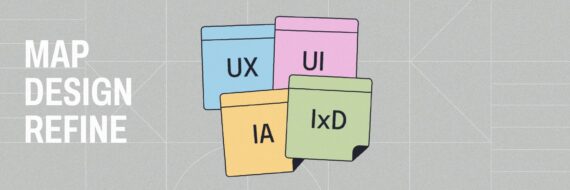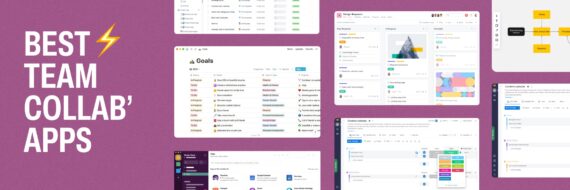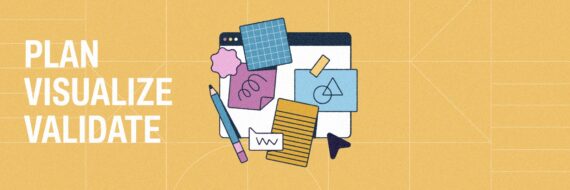Starting a career in the user experience (UX) research field is a decision that more and more people are making nowadays. Better understanding of what the job means and why it is important has grown substantially in the last few years. So if you’re just starting on your career path or looking for a change, this might be just the right choice for you.
A position as a UX researcher comes with many benefits. For starters, you can be sure there is a high demand for your work. Though nothing is guaranteed when it comes to new technologies, the probability of artificial intelligence replacing a UX researcher is pretty low. In this role, your work can have a significant impact on the product.
As a UX researcher, workplace independence is within your reach. Enjoy the freedom of planning your own work schedule and selecting research methods such as questionnaires, in-depth interviews, or card sorting. Sounds interesting? Keep reading.
What does a UX researcher actually do?
To explain what a UX researcher does isn’t that simple. The definition varies depending on who you ask; for example, a startup owner versus the head of research at Amazon. The core responsibilities are essentially the same, though the day-to-day tasks may vary from one company to another. The UX researcher is often an integral part of a larger product design team. Depending on company structure, your work can be solely research related or if the responsibilities are broader (e.g. UX designer or even product designer), research could be just a small part of your job.
One task you’ll surely have is creating personas, a specific representation of data that is gathered and presented in the form of a short bio. It helps to think about the product with a specific audience in mind. To get a better understanding of how it works in real life, let me introduce you to our persona, Ann.

Ann studied psychology and envisioned herself as an HR recruiter at a large tech company. After gaining some experience in the field, she soon realized it was not her cup of tea. She decided to try something different and joined a small startup as a UX researcher. Ann’s responsibilities in the first phase of product development were:
- Define the problem the product will solve. This can be accomplished through interviews with stakeholders, anyone within the group or organization who is affected by the outcome of the project. This will provide a glimpse of the business perspective and its limitations. Talk with product managers, sales people, and others involved in the product.
- Perform quantitative research. Use online questionnaires, data from Google Analytics, and anything else that will allow you to understand the hard numbers.
- Define and recruit users for qualitative research. Using the data you’ve gathered, determine who your key users are and talk with them.
- Create a scenario for in-depth interviews with users. Ensure users are asked similar questions to keep the results unbiased.
- Interview the users. Usually done one on one, talk with them about their needs and problems.
- Analyze the data. Look for patterns and insights.
Using insights from her research, Ann helped the UX designers to build a roadmap and UX strategy for the product. The UX team defined who they were designing for, what features were a must, and what things to let go of. The deliverables at this phase were paper prototypes and advanced mockups.
Once the prototypes were ready, it was time to perform usability tests. This is different from the first phase because now a very specific solution was being tested. Ann needed to determine if users would understand the product and find value in it or if there were things that needed to be changed or improved. For this, a solid amount of human-computer interaction knowledge is required. During the tests, a UX researcher usually asks the user to perform a few short tasks on the prototype, while describing what’s being done. Based on the UX researcher’s insights, the UX team will be able to polish the prototype and start working on the design.
Let’s stop here for a moment and acknowledge that this is an ideal scenario. In an environment that puts emphasis on the value of user research, you might go down a similar path. What you need to remember is that sometimes companies already have a vision of the product they want to create and don’t necessarily want to test the idea itself. In this case, the UX researcher might test the product with usability testing.
It is worth mentioning that bigger companies, like Google or Apple, usually keep UX research and UX design separate. A job title at these companies will tell you a lot about your responsibilities. In smaller companies, startups, and software houses it is common to be working both on UX research and UX design. The title you have will probably be product designer, UX designer, or even UX/UI designer. In those cases, it is good to go through your future job description in detail, even do some investigation on LinkedIn to check out what other people in similar positions at the company do.
🎬 Learn what Slickplan can do!
We filmed a short video to show you exactly how to use Slickplan
What is the average salary for a UX researcher?
A career in UX research involves a lot of growth and intellectual stimulation but there are other more practical advantages to this type of work. Let’s talk money; Salaries in the UX field are growing every year. This is partially due to the fact that in the face of such big demand for UX roles, there is a relatively low number of specialists. According to a list prepared by Indeed, the average annual salary for a UX researcher in the United States is $114,932. Glassdoor’s 50 Best Jobs in America, puts UX designer in 38th place with a median salary of $90,478.
You also need to take into account that entry-level positions are not always that lucrative. As you move up the UX ladder, it gets better and better. Because the field is relatively new, it is easier to become a senior UX designer compared with a senior position in a field that is already saturated.
Think visually. Improve UX with Slickplan
Build intuitive user flows, stronger customer journeys and improve information architecture.
How do you start?
While a lot of schools offer good programs for UX, many specialists in the field are self-taught. There are tons of resources available on the internet. Before you decide to hand in your notice or pay for expensive college, try this free Udacity course on product design, check out the Design Life podcast, or read articles on Slickplan to see if you’re actually into it.
The next step would be to engage yourself in a community project where you can help do something good and practice your new skills at the same time. This is a great starting point for your portfolio. Nobody expects that a junior will show up for a job with a bunch of great commercial projects up their sleeve but the initiative and passion will definitely be appreciated.
Finally, it is important to remember that UX research is not just about people skills, conducting interviews, and placing colorful post-it notes on a whiteboard. What comes afterwards is hard analytical work that allows you to uncover valuable insights. It is overcoming your “expert syndrome” and learning to listen to the users. It’s also having great knowledge of research methods and tools. And guess what – it is totally worth it.






 X
X

